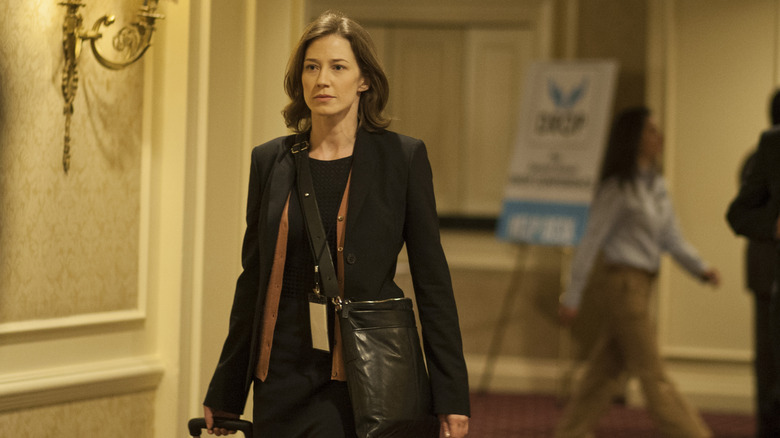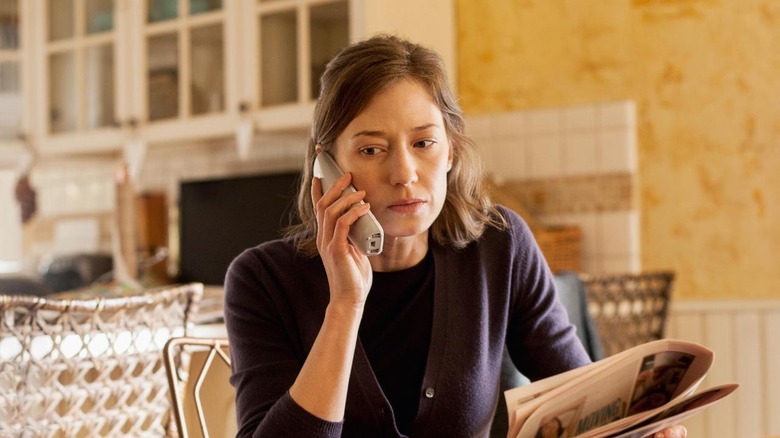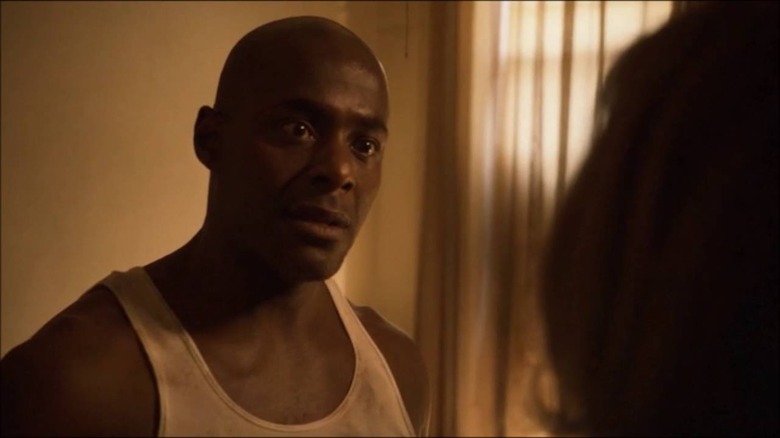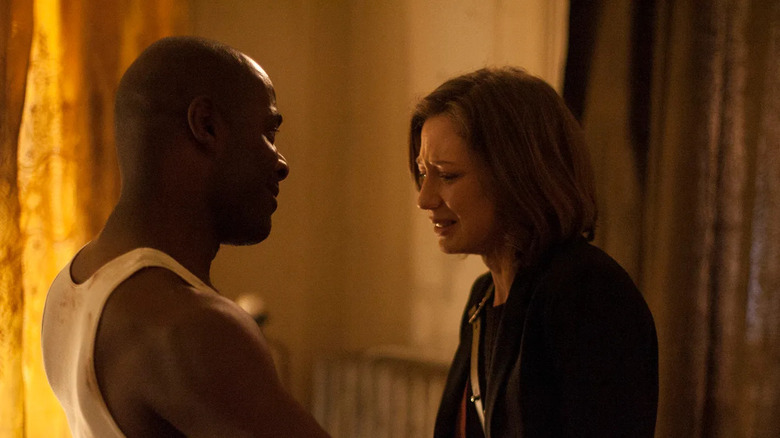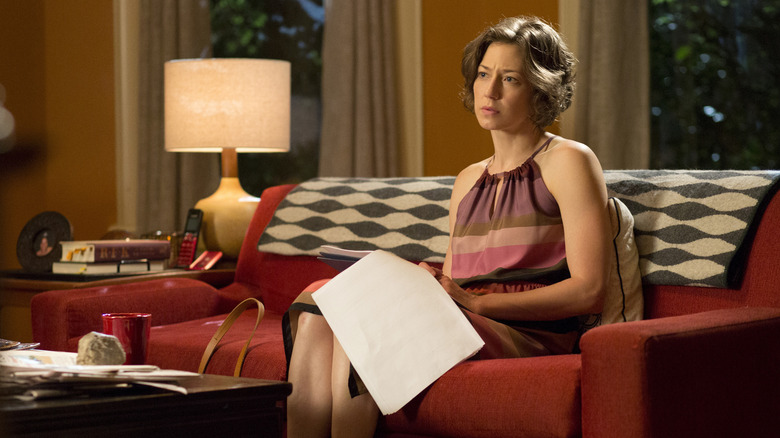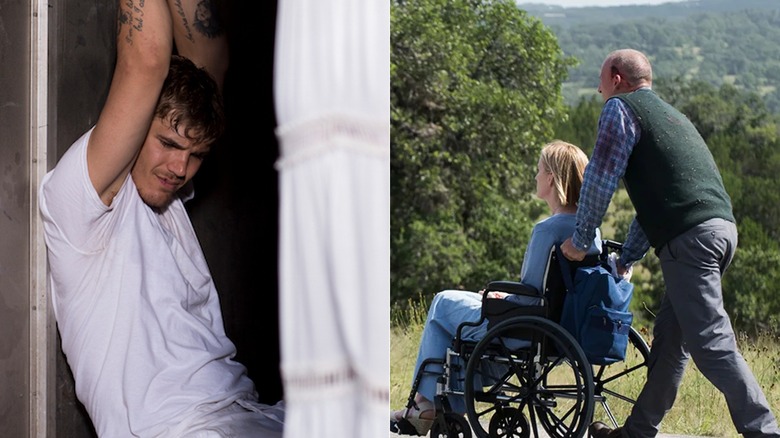The Best Episode Of The Leftovers Season 1 Left The Book Behind In The Major Way
Although "The Leftovers" is often considered one of the best TV shows of all time, it's worth remembering that it did not get off on the right foot. It was 2014, after all, and people were still mad at showrunner Damon Lindelof for the "Lost" finale. Half the viewers in that first season were hate-watching it, and when the series turned out to be another character-driven series with plenty of unexplained weird stuff going on, they did not hesitate to declare Lindelof a hack fraud yet again.
To be fair to the haters, early season 1 of "The Leftovers" was probably the weakest section of the entire show. Although there's a lot of great character work done here — especially Jill's chaotic friend group, whom the show left behind entirely in season 2 — those first five episodes felt a little too bleak and aimless. Every single character was miserable, perpetually angry at each other, and constantly making decisions so self-destructive it was agonizing to watch.
The show's miserable tone hit its height in its fifth episode, "Gladys," which centers around a horrific murder of a woman in the Guilty Remnant. The fact that the character was so depressed that she consented to her own murder, only to start pleading for her life once it was too late, was so bleak that it had viewers wondering what we were even doing here. At a certain point, why bother with a TV show that's this depressing all the time? The show needed a change in tone if it wanted to keep viewers coming back, and luckily the writers seemed very much aware of this.
Finally, a Nora-centric episode
Up until this point in the season, Nora Durst was mainly known as that sad woman in Mapleton who everyone felt bad for. Jill and her friends spend half of the second episode stalking her out of pure curiosity, and we're left wondering why she carries a gun in her purse and why she buys kids' cereal even though her kids have been gone for three years. Through her small appearances sprinkled throughout the first five episodes, we also learn she's Matt's sister and that there's some sort of mutual interest between her and main character Kevin.
Much was made by fans of the cause of the Sudden Departure or the exact motivations behind the Guilty Remnant, but the big mystery of early season 1 was Nora herself. We had no idea what exactly made her tick; whereas the book made her a recurring point-of-view character up front, the show was holding her at arm's length. "Guest" was subsequently a much-needed deep dive into Nora's psyche, told through her chaotic odyssey away from small-town Mapleton to the busy world of New York City.
After five episodes of seeing Nora in an environment where everyone knows and pities her, here she's just another person in the crowd. Even though she's going to a panel specifically to talk about her experience of losing her family, the episode robs of her of this by having her identity be stolen by a conspiracy theorist nut. We finally see her interacting with people who don't know her tragedy ahead of time, and we see a whole new side of her as a result.
An unexpected piece of the puzzle
Especially in hindsight, "Guest" is amazing in just how effectively it fits into the rest of the show. It effortlessly incorporates the lifelike dummies that will wreak havoc in the season finale, as well as establishes Nora's ongoing desire to run away to some place where nobody knows what happened to her. It's an episode that at first feels like a total departure from everything we'd seen so far, which makes it such a pleasant surprise when it starts directly answering ongoing questions.
Case in point: Holy Wayne, the guy who we'd so far only seen in Tommy's storyline. He was one of the more controversial characters in the season, in part because of how little he had to do with the rest of the show. For fans in the book it was especially hard to get invested in him, because the book made it clear the guy was a fraud. Book Wayne was a straightforward narcissistic cult leader who is arrested and pleads guilty for sexually grooming underage girls. He's a cynically-written character, seemingly designed just to emphasize how lost and desperate Tommy is for any kind of purpose.
So when Wayne suddenly pops up near the end of "Guest," it's a massive shot in the arm for the show. Not only is it a riveting, unexpected converging of two completely unrelated characters, but it's also the show stumbling upon its core question: What stories do we tell ourselves to find happiness? It's a question that Nora would grapple with as late as the series finale, but here the question centers around the existence of magic hugs. Could a hug really take all your pain away? It turns out that yes it can, if you really want it to.
An acting masterclass
Carrie Coon is one of the greatest actresses in the world, and "Guest" is when she really proves it. The earlier scene where she yells at the self-help author who approaches her at the bar should, on its own, be enough to earn her an Emmy, but it's followed up by the even more impressive scene with Holy Wayne. When he hugs her and she lets out those sobs, it really feels like something magical's happening here, that her pain is indeed being pulled out of her.
Paterson Joseph as Holy Wayne also does an amazing job, straddling the line between a con man and a genuine miracle worker. The result is a scene that answers fans questions without actually answering it all; it shows us everything Wayne does with zero omissions, but gives us room to decide for ourselves what we're seeing. It's a delicate, ambiguous balancing act that would prove to be the show's biggest strength.
"The Leftovers" season 2 would take away some of this ambiguity by having Tommy pull the same con — it turns out that hugs in general are magic, not Wayne himself — but this doesn't undermine the ending to "Guest" as much as one might expect. The point remains that Nora was offered up a convenient story to help her through her suffering. Throughout the episode she dabbled in a life where she was happy and carefree, but comes out of it still with the belief that she's not strong enough to reach that happier life for real. Then comes Wayne offering her a cheat code, using fake magic to give her a real emotional breakthrough. This is hardly the end of Nora's grief, but it's a major step in the right direction.
Paving the way for season 2 and beyond
For viewers struggling with "The Leftovers" season 1, it's often recommended by fans that they try to make it to "Guest" before giving up on the show entirely. It's good advice because the episode is easily the season's best taste of what the rest of the show would have to offer. Just as "Guest" is a surprisingly uplifting episode that takes a character far outside of Mapleton, season 2 is a significantly more hopeful season of TV that takes the whole cast away from the cold, gray world of upstate New York. "Guest" was the first real indication that the depressing tone of season 1 wouldn't last forever, that the characters' present pain was a necessary part of their journey towards a better place.
"Guest" was also important because it proved how good the show was when it went beyond its source material. Whereas the "Game of Thrones" writers stumbled the moment they strayed from the books, it's clear that for the writers of "The Leftovers," the problem was more that the book was holding their brilliance back. Every time they added their own adaptive flourish, from making Laurie pregnant at the time of the Departure to making Matt and Nora siblings, the change made things far more compelling. Connecting Nora to Holy Wayne was their smartest choice yet.
Although "The Leftovers" season 1 still stuck to the broad strokes of the book, season 2 would be entirely its own thing. From that point on, the show would be making it up entirely as it went along, an approach that might not have sounded that promising if "Guest" hadn't already proven the writers could pull it off.
Establishing the departure episode
As most critics noted at the time, "Guest" and the Matt-centric earlier episode "Two Boats and a Helicopter" were far and away the best episodes of season 1. Whereas most of the season's episodes followed the typical prestige drama format of juggling a handful of storylines at a time, those two episodes clung to Matt and Nora and never let go. They filtered everything through their main character's perspectives, taking them on a focused, gripping journey regardless of how long it kept us away from the rest of the cast.
Season 1 only had two episodes written under this format, but season 2 would have six episodes contained to just one or two characters' perspectives. Season 3 would also have six of them, this time out of only eight episodes total. It was a risky approach, but one which Damon Lindelof-penned shows seem exceptionally well-suited for. This format is often mistakenly labeled as a bottle episode (which is when an episode largely takes place in a single pre-existing set), but over the years critics seem to have settled on the term "departure episode" as a better fit.
"The Leftovers" may not have invented the departure episode, but it sure as hell perfected it. (The fact that such a show was based around an event called "The Great Departure" is also a fun coincidence.) But such a bold storytelling approach was one that needed to be tested out first, so it's lucky that "Guest" was strong enough to give the show permission to double down on the format. This Nora-centric season 1 episode would be outdone by the show's later seasons, but those later seasons might not have happened at all if "Guest" hadn't hit it out of the park.
